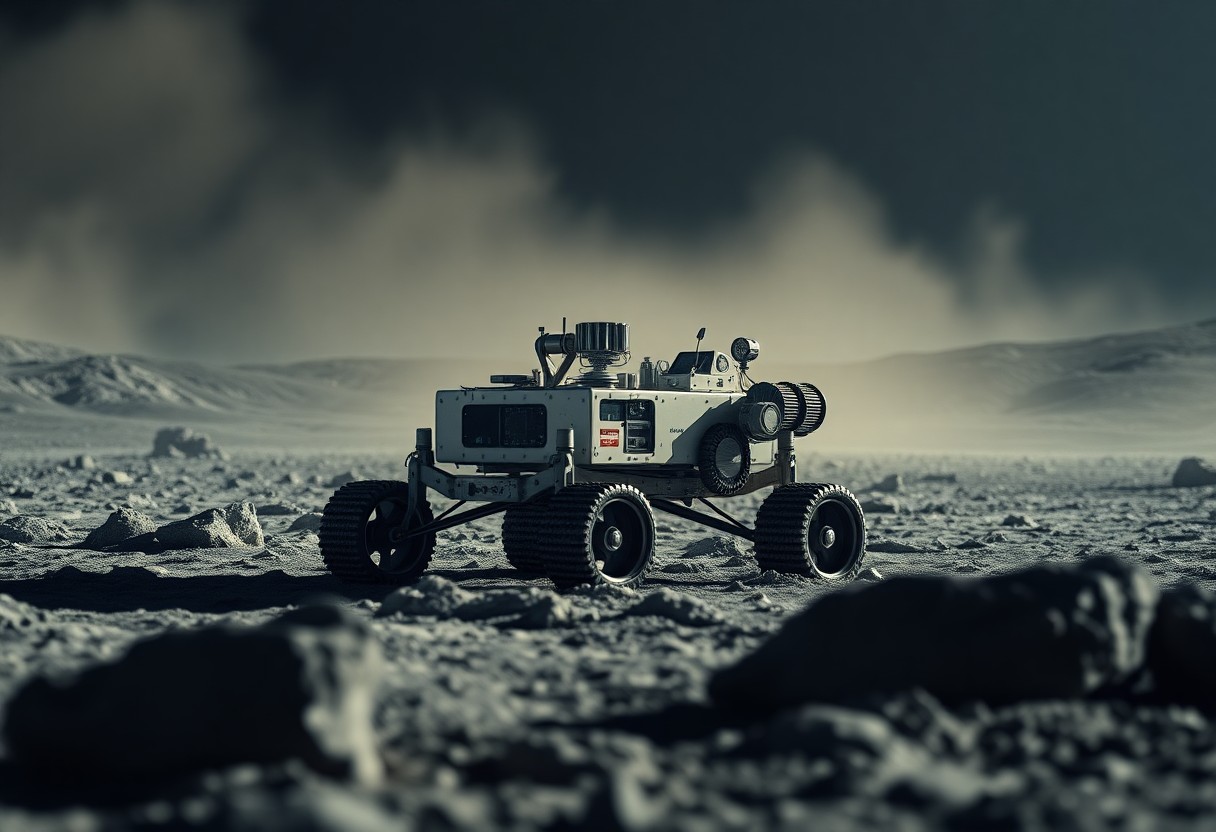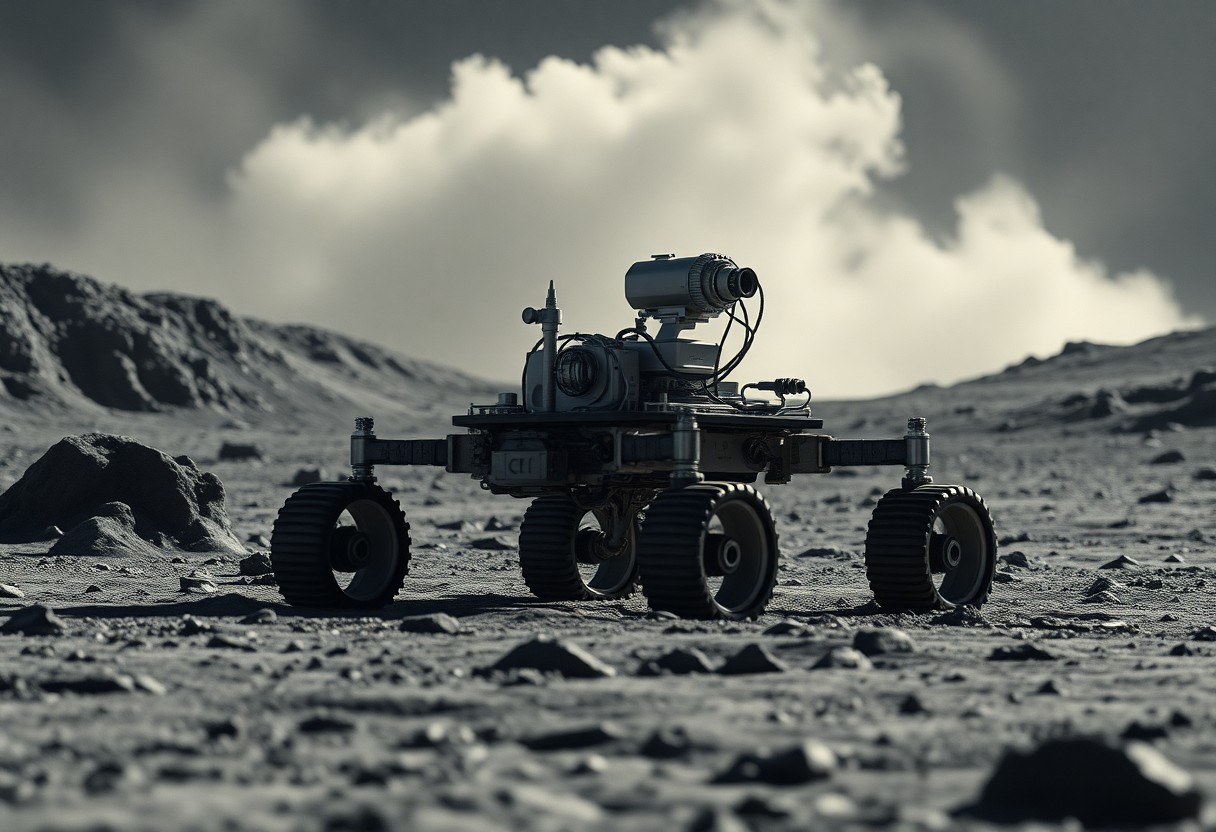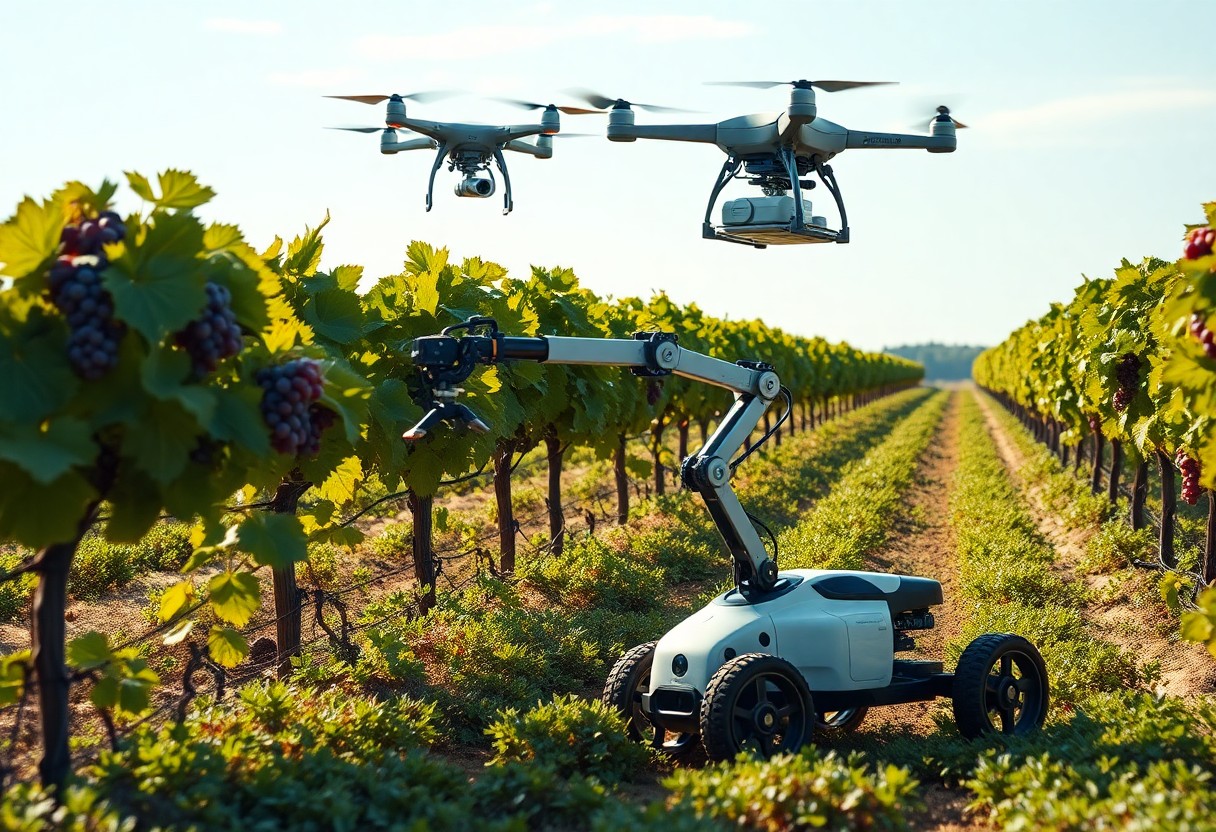Over the years, you may have wondered how moon robots manage to thrive amidst the harsh conditions of the lunar surface. These robotic explorers are designed with advanced technology to withstand extreme temperatures, intense radiation, and low gravity. Understanding their innovative engineering and adaptive strategies not only highlights their resilience but also reveals the remarkable advancements in space exploration. Join us as we examine into the fascinating mechanisms that empower these machines to carry out vital missions on the Moon, ensuring that your fascination with outer space continues to grow.
Understanding Extreme Lunar Environments
Before exploring how moon robots maintain their tenacity, it’s vital to comprehend the extreme environments they operate in. The lunar surface presents numerous challenges, including extreme temperature fluctuations and high levels of radiation. Every mission to the moon must take these conditions into account to ensure the longevity and functionality of robotic systems tasked with exploration and research.
Temperature Fluctuations
Understanding the moon’s temperature ranges is vital for designing effective robotic systems, as they face both scorching heat and extreme cold. Below is a summary of these variations:
| Daytime | ~127 |
| Nighttime | -173 |
Radiation Exposure
Exposure to radiation is another significant concern for robotic missions on the lunar surface. Unlike Earth, the moon lacks a protective atmosphere, which results in high levels of solar and cosmic radiation, posing a risk to both equipment and data integrity.
Hence, understanding the effects of radiation is key to extending the operational life of moon robots. Robust shielding and careful mission planning mitigate these risks, allowing your robotic explorers to gather vital data and perform tasks effectively in such a hazardous environment. By considering radiation exposure in your designs, you enhance resilience and ensure mission success on the moon’s surface.
Engineering Solutions for Durability
While designing robots for the moon, engineers face the challenge of ensuring their durability under extreme conditions. This involves innovative solutions that address factors such as temperature fluctuations, radiation exposure, and abrasive lunar dust. Effective engineering plays a vital role in maintaining the operational lifespan of these sophisticated machines, allowing them to perform critical tasks in an unforgiving environment.
Material Selection
Selection of appropriate materials is paramount for the longevity of moon robots. Engineers often opt for lightweight yet strong materials, such as titanium and specialized composites, which can withstand harsh conditions while minimizing overall mass. Advanced coatings can also be applied to enhance resistance to abrasion and chemical degradation, ensuring that your robot remains functional amidst lunar challenges.
Design Innovations
Besides material selection, design innovations play a significant role in enhancing durability. Engineers are continually exploring advanced configurations that allow moon robots to effectively navigate the rugged terrain and manage thermal extremes.
Plus, innovative designs may include shock-absorbing features to minimize impacts from the lunar surface and modular components that can be easily replaced or repaired on-site. Engineers use simulations to identify stress points and refine shapes that optimize airflow and thermal management. By integrating flexibility and adaptiveness into the design, you ensure that the robot can endure the unpredictable hazards of the lunar environment, maximizing its longevity and functionality.
Power Systems in Harsh Conditions
The power systems of moon robots are engineered to withstand extreme environments, ensuring operational efficiency in low temperatures and prolonged darkness. These systems must maintain functionality under intense radiation and vacuum conditions, making reliable energy sources and innovative designs crucial for mission success. Your understanding of these power solutions highlights the innovative approaches taken to ensure that moon robots can thrive in such challenging circumstances.
Solar Energy Utilization
Above the lunar surface, the abundant sunlight serves as a primary power source for moon robots. Utilizing solar panels, these robots convert sunlight into electricity, enabling them to perform a variety of tasks during lunar day periods. By optimizing panel orientation and maximizing sun exposure, you can appreciate the advanced design features that help robots efficiently harness solar energy.
Battery Technologies
At night, when sunlight isn’t available, moon robots rely on advanced battery technologies to store energy for continual operation. Innovative battery designs, like those using lithium-ion or specialized lunar-compatible materials, ensure that your moon robots are ready to perform crucial tasks even in prolonged darkness.
A key aspect of battery technologies involves selecting materials that maintain efficiency in extreme temperatures. You should take note that the thermal properties of lunar environments mean batteries must withstand both extreme cold during the lunar night and the heat during the lunar day. Thermal insulation strategies and the development of batteries that remain operational in a wide temperature range are vital for the longevity and reliability of moon robots. This technology allows your lunar explorers to conserve energy efficiently and complete their missions despite the difficult conditions they encounter.
Communication Challenges in Space
Not only do moon robots face extreme environmental conditions, but they must also navigate significant communication challenges. The vast distance between Earth and the Moon complicates interactions. You might find it surprising how these difficulties affect mission success, leading to delays in data transfer and the need for innovative communication techniques to ensure effective operation.
Signal Delay Issues
At distances of nearly 238,855 miles, signals sent between Earth and lunar robots experience noticeable delays. You have to account for roughly a 2.5-second round trip for messages, which can hamper real-time decision-making. Consequently, this necessitates a level of autonomy in robotic systems to continue vital operations even when communication is interrupted.
Ground Control Strategies
Signal management is necessary for maintaining contact with moon robots. You may be interested to know that ground control teams develop comprehensive strategies to address the limitations of distance, including pre-programmed tasks and contingency plans for autonomous decision-making. Utilizing a mix of predictive modeling and adaptive algorithms allows robots to handle unexpected situations, enhancing their effectiveness in extreme environments.
Challenges in communication extend beyond mere signal delays. As you explore, consider how ground control strategies adapt to these issues by employing advanced software that proactively manages tasks even when real-time input is unfeasible. These strategies enable your moon robots to preemptively tackle operational hurdles, ensuring that they function effectively under harsh lunar conditions while optimizing their mission objectives.
Autonomous Navigation and Operation
Many moon robots have been designed to navigate the lunar landscape independently, utilizing advanced algorithms and sensors to traverse vast and unforgiving terrains. This capability enables them to complete missions without direct control, ensuring they can cover large distances while avoiding potential hazards. As you explore these systems, you’ll discover how they continually adapt and efficiently execute their tasks under extreme conditions, showcasing their remarkable engineering and design.
Terrain Adaptation
By analyzing various lunar surface characteristics, robots can modify their movement and operational strategies to cope with shifting landscapes. You may find that these adaptations include regulating speed, changing direction, and selecting appropriate paths to optimize performance in rocky, dusty, or sloped environments.
Obstacle Avoidance
With the help of sophisticated sensors and imaging technology, moon robots are adept at detecting and navigating around obstacles. The real-time processing of data allows them to adjust their trajectories while you observe their agile maneuvers, ensuring safe passage through unpredictable lunar conditions.
Even as moon robots traverse challenging terrains, their obstacle avoidance systems continually scan the environment, identifying and responding to potential hazards in their path. This feedback loop allows you to appreciate how these machines proactively prevent collisions with boulders, craters, or other unexpected features, ensuring the safety and success of their missions on the moon’s surface.

Real-world Applications and Success Stories
Despite the challenges posed by extreme lunar environments, moon robots have achieved remarkable feats that showcase their resilience and adaptability. These robotic pioneers have successfully completed missions that not only extend our scientific understanding of the Moon but also pave the way for future exploration and potentially pave the path for human colonization efforts. Their contributions, demonstrated through various projects, emphasize the potential for robotic solutions to enhance space exploration across different celestial bodies.
Previous Lunar Missions
Realworld accomplishments from previous lunar missions like NASA’s Lunar Reconnaissance Orbiter and the Chinese Chang’e series illustrate how well-designed robots navigate harsh conditions. You can see how these machines overcome obstacles, map the lunar surface, and gather critical data that informs your understanding of the Moon’s geology and history. Each mission builds on the last, showing just how successful robots can be in making groundbreaking discoveries.
Future Prospects
By analyzing current advancements, you can appreciate how future lunar missions will likely involve even more sophisticated robots designed to withstand the Moon’s extreme temperatures and radiation. These innovations may lead to robots that not only explore but also assist in establishing sustainable human presence on the Moon.
Another avenue for future robotic moon missions is the potential for collaboration with artificial intelligence. This advancement could enable robots to make decisions in real-time, enhancing their operational efficiency. You might envision robots equipped with advanced sensors capable of performing autonomous tasks, such as constructing habitats or even mining resources. As technology progresses, the next generation of moon robots promises not only to advance our exploration efforts but also to create a new frontier for scientific research and human activity on the lunar surface.
Conclusion
Considering all points, you can appreciate that moon robots maintain their tenacity in extreme environments through a combination of robust design, advanced technology, and effective energy management. By employing materials and systems that withstand harsh conditions, these machines ensure operational longevity. Furthermore, adaptive algorithms and remote controls enhance their performance, allowing them to navigate the lunar terrain efficiently. With ongoing innovations, you can expect these robots to continue thriving in one of the most challenging environments known to humanity.







